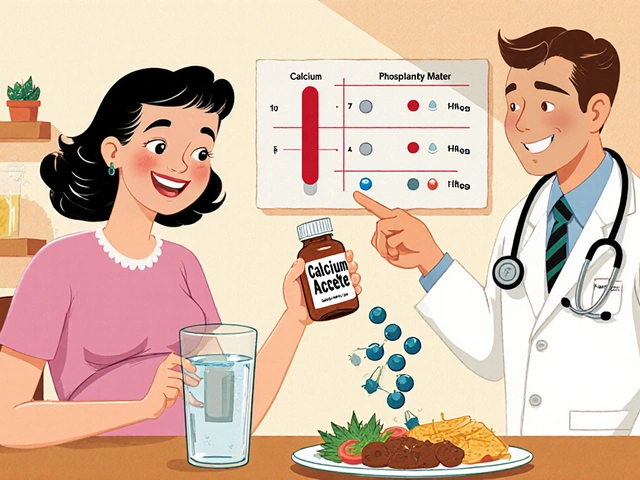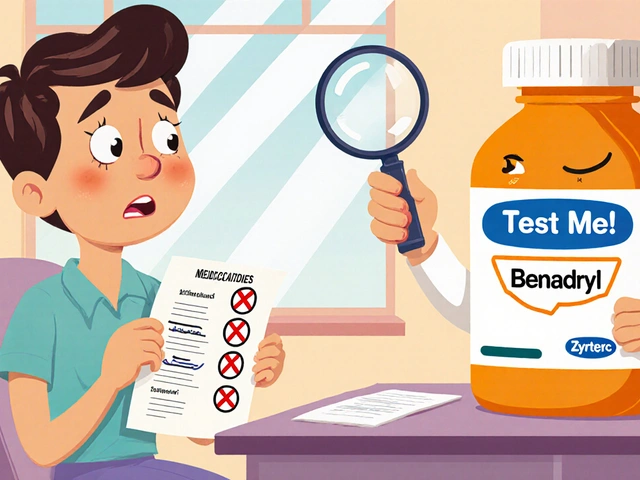Prednisolone Replacement: What Works and How to Change Safely
If you’ve been on prednisolone for a while, you’ve probably heard talk about “alternatives” or “swap options.” Maybe you’re worried about side effects, cost, or just want something that fits your lifestyle better. The good news is there are several other steroids and non‑steroid options that can do the job, but you need to know which one fits your condition and how to transition without trouble.
Top Prednisolone Alternatives
Here are the most common replacements doctors consider. Each has its own strengths, so pick the one that matches your health needs.
1. Methylprednisolone – This is a close cousin of prednisolone. It’s a bit stronger per milligram, so you might need a lower dose. It works well for asthma, arthritis, and skin flare‑ups. Most people tolerate it without the sudden mood swings that prednisolone can cause.
2. Hydrocortisone – The weakest of the lot, hydrocortisone mimics the body’s natural cortisol. It’s a solid choice for low‑dose maintenance or for people who can’t handle stronger steroids. You may need to take it more often because it doesn’t last as long.
3. Budesonide – This one is inhaled or taken as a capsule that releases the drug in the gut. It’s popular for inflammatory bowel disease and asthma because it stays mostly in the target organ, reducing whole‑body side effects.
4. Dexamethasone – Very potent, so you only need a tiny amount. It’s useful for severe inflammation, brain swelling, or chemotherapy‑related nausea. Because it’s so strong, doctors watch the dose closely to avoid bone loss.
5. Non‑steroid options – In some cases, drugs like NSAIDs (ibuprofen, naproxen) or disease‑modifying agents (methotrexate for rheumatoid arthritis) can replace steroids altogether. These aren’t “direct swaps,” but they can reduce the need for long‑term steroid use.
How to Switch Safely
Switching isn’t something you should do on your own. Here’s a step‑by‑step plan that keeps you safe.
Step 1: Talk to Your Doctor – Explain why you want a change (side effects, cost, convenience). Your doctor will check your lab results, current dose, and how long you’ve been on prednisolone.
Step 2: Choose the Right Alternative – Based on your condition, your doctor will pick one of the options above. They’ll calculate the equivalent dose so you don’t get a sudden hormone drop.
Step 3: Taper the Old Drug – Most people need to slowly reduce prednisolone over a week or two. For example, if you take 10 mg daily, you might go down to 5 mg for a few days, then switch to the new drug.
Step 4: Start the New Medication – Begin the replacement at the doctor‑prescribed dose. Keep a daily log of how you feel, any new symptoms, and any side effects.
Step 5: Monitor Lab Work – After a couple of weeks, your doctor will order blood tests (like cortisol, blood sugar, and bone markers). This checks that the new drug is doing its job without causing hidden problems.
Step 6: Adjust as Needed – If you notice new aches, mood changes, or blood test flags, call your doctor. Small dose tweaks can make a big difference.
Remember, the goal isn’t just to quit prednisolone; it’s to keep inflammation under control while minimizing side effects. Most people feel better after the switch once the new drug settles in.
Bottom line: there are several solid prednisolone replacements, each suited for different health issues. Talk to your doctor, taper safely, and keep an eye on how you feel. With the right plan, you can stay healthy without the unwanted drawbacks of long‑term steroid use.





